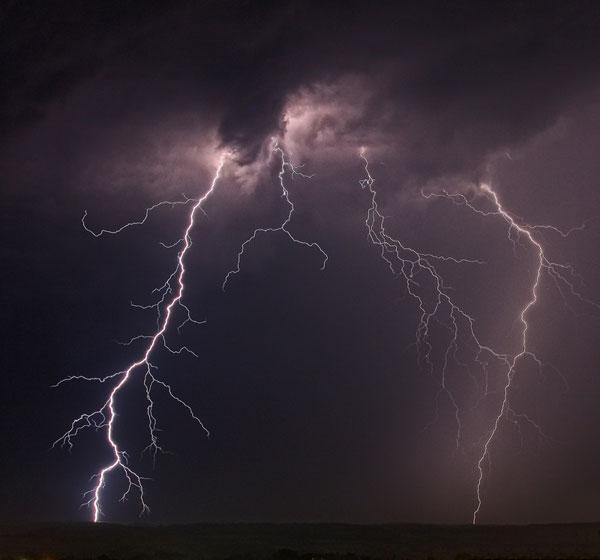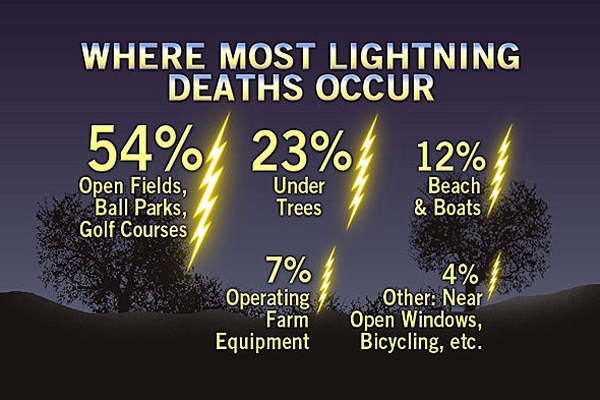
Learn How to Protect Yourself from a Lightning Strike

This article was provided by AccuWeather.com.
There have been four fatalities attributed to lightning so far in 2012. The yearly average of lightning deaths in the U.S. is 54, according to NOAA. The most frequent outdoor activity where people are killed by lightning is fishing. Other activities with high lightning fatality rates are playing golf, camping and sheltering under trees.
The most important thing to know is that there is no safe place to be sheltered from lightning outdoors. When you first hear thunder, you should immediately seek shelter in a "safe" building or car.
NOAA describes a safe building as one that has four walls, a floor, a roof and has plumbing or wiring. A safe car is one that is fully enclosed with a metal top.
Examples of buildings or structures that will not provide protection from a lightning strike are car ports, open garages, covered patios, picnic shelters, beach pavilions, golf shelters, tents, baseball dugouts, sheds and greenhouses.
Once inside the "safe" building, avoid showers, bath tubs, sinks and electronic equipment. Also avoid using electronic equipment inside the car and avoid touching anything metal.
After seeking shelter in a building or car, remain inside until 30 minutes after you hear the last clap of thunder.
Sign up for the Live Science daily newsletter now
Get the world’s most fascinating discoveries delivered straight to your inbox.
There will be times when you are participating in outdoor events that will keep you from seeking shelter. Follow these safety tips if a thunderstorm is approaching and you are outdoors with no shelter nearby.
Outdoor Sporting Events
At the first clap of thunder, all players, coaches, workers and spectators should seek shelter in a "safe" building or car. The event should not resume until 30 minutes after the last sounds of thunder are heard.

Beach or Lake
If you are at the beach when a thunderstorm is approaching, seek shelter in your car. Do not return to the beach until no thunder is heard for 30 minutes.
If you are fishing on a lake, head into shore as soon as you hear thunder. Tie your boat off and seek shelter in a "safe" building or vehicle. If you are in a small boat with no cabin and don't have time to make it to shore, drop anchor and get as low in the boat as possible.
If your boat is equipped with a cabin, seek shelter in the cabin as long as it is fully enclosed. Avoid using the radio unless it is an emergency and avoid anything made of metal.
Bicycle or Motorcycle
Before you ride, check the weather and if thunderstorms are in the forecast, don't ride. If you are out and a storm is approaching, pull off the road as soon as possible and seek shelter in a "safe" building.
Before taking part in any outdoor activities, know what the weather forecast is for the area you will be in. A weather radio is a good thing to have whether you are camping, boating or playing sports. If a thunderstorm is in the forecast, you may want to postpone your outdoor event for another day.
© AccuWeather.com. All rights reserved. More from AccuWeather.com.









